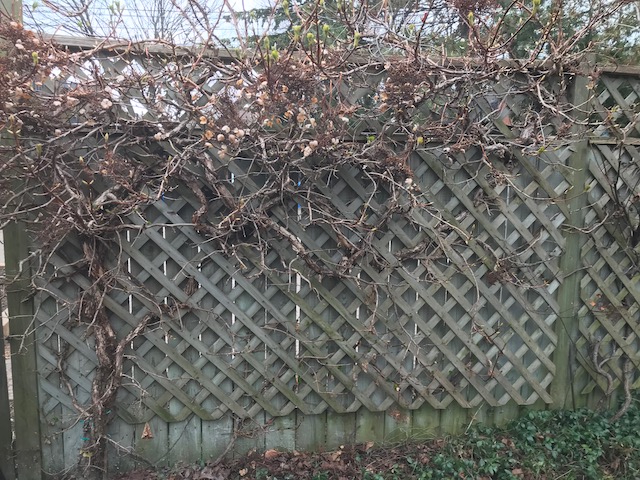
Dear Master Gardener,
My backyard will soon be undergoing major changes due to a kitchen renovation that has led to the building of a large deck and new hardscaping. I’m wondering if you could advise me about how to successfully transplant mature forsythia bushes that have to be removed for a new shed. I would also like to know how to transplant a mature lilac.
Finally, I would appreciate if you could advise me on how I might preserve a very healthy climbing hydrangea on a fence that will need to be replaced due to rot.
Thanks! Don’t hesitate to contact me if you need more information. I’ve attached a photo of the climbing hydrangea taken a few weeks ago. I have other photos but your site did not seem to allow the upload of more than one.
Karen
Forsythia & Lilac – woody plants can be transplanted quite successfully if you plan well beforehand. The best time is when the tree/shrub is dormant either before it leaf’s out in early Spring or in the Fall before the soil freezes. Care is needed when digging up the root ball so as not to damage the roots. Dig a wide hole around the base of the tree, getting as much of the root system as possible and keep as much soil on the roots as possible. The root ball should be ten times, or more, wider than the tree’s trunk diameter. Choose the new site in accordance with the trees growing requirements and make sure that the hole will accommodate the root ball with room to spare.
Dig a hole in the new location that is two times wider than the root ball and the same depth. Do not add topsoil, compost or other soil amendments as this will limit root growth. After positioning your tree/shrub into the centre of the hole, water around it, filling it almost half full. When that water has drained through, back fill the hole with the original soil. Press down gently and firmly to eliminate air pockets. Water again with at least two buckets full. Water every day for the first two weeks and then every two to three days for the next couple of weeks to encourage the roots to re-establish.
Climbing Hydrangea – the above information is applicable to the hydrangea with a few additions. You will need to detach it gently from its current growing support system/fence and the move it to its new home and reattach it to a new support system/fence. Ideally, the new location, support system and planting hole should be ready to accommodate the plant before you attempt the move. Once the plant has been dug up, I’ve found the best & safest way of transporting the root ball and all the vine branches is to lay it down on a tarp and carry it by all four corners to the planting site. If the pre-dug hole is not big enough to accommodate all the root ball comfortably with lots of room to spare (see above), then now is the time to enlarge it. Once this is done, you can manoeuvre it into the hole and rearrange the vines on the new structure. If some of the vine branches get broken or damaged en route, then just prune them out with a sharp clean secateurs. Follow the rest of the planting instructions as for lilac & forsythia, above.
As these are mature plants, you will have quite a bit of digging to do. If this is too onerous, contact your landscape contractor or if you don’t have one, visit Landscape Ontario, link below, and they will recommend certified people in your neighbourhood.
Good Luck with the move!

